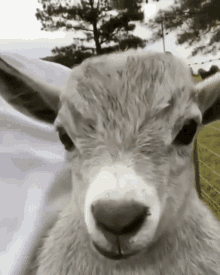

The greatest numbers of feral goats occur in the arid and semi-arid pastoral regions of Queensland, New South Wales, South Australia and Western Australia.

The mixed origins of Australia’s feral goats are reflected in the genetic diversity seen in wild populations. When this industry collapsed in the 1920s, many goats were abandoned in preference for wool which added to the feral population.

Goats were introduced to many areas by early settlers, miners and railway construction gangs for meat and milk.Ĭashmere and Angora goats were also introduced to Australia in the mid-1800s for the fibre industry. Early populations were initially concentrated near settlement areas, but they have since spread across 35% of Australia and occur on many offshore islands.

Populations History of spreadįeral goats have been present in Australia since early European settlement, with wild populations becoming established because of accidental escape or deliberate release. Read more about the classification of invasive animals in Victoria. “The cattle are lowing – the baby awakes – the little Lord Jesus – but no crying he makes” Īnd I seem to hear guinea pigs more than mice do the squeaking these days.Goats (feral or wild) are declared as established pest animals in the state of Victoria under the Catchment and Land Protection Act 1994 (CaLP Act) And the warbling was annoying to her mother to say the least. In 1992 I read this book where a young girl was considered a warbler – it was a thing she did instead of talking. I did not originally know about “warble” in a positive context. Thank you for the distinction between grunting and squealing too. Heard rather too many cow bellows as a young EAL student. There are so many bees on the lavender, you can hear them buzzing. The guinea pigs squeak when they’re hungry.įinally, insects that make a continuous, low sound are said to buzz: Small rodents that make repeated short, high sounds squeak: She could hear the frogs croaking in the pond. When frogs make their characteristic deep, rough sound, they croak: We’ll finish with a range of very different animal noises. We would wake to the sound of wood pigeons cooing. The chickens clucked contentedly as they scratched around in the yard.įinally for birds, geese honk and crows caw when they make their loud, rough noise and, by way of contrast, when doves and pigeons make their repeated soft, low sound, they coo: Owls hoot, while chickens cluck and ducks quack: Other bird noise words are specific to different types of bird. Gulls screech overhead as we make our way to the harbour. Two less positive words for unpleasant, loud and high-pitched bird sounds are screech and squawk: In the spring, the meadows are alive with the sounds of birds warbling. I love to hear the birds tweeting in the morning.Īll I could hear was running water and the sound of the birds chirping.Īlso positive is the word warble for a longer sound, with rapidly changing notes: Most are positive (or at least, neutral) for example the words tweet, chirp and cheep for the short, high sounds that they make: Moving on to wild animals, there are a lot of words for the noises that birds make. The pigs were squealing as they were being loaded onto the truck. When they make longer, high-pitched sounds they squeal: Pigs are said to grunt when they make repeated low, rough noises. In the valley below, the cattle lowed plaintively.Ī cow bellows as she’s separated from her calf. There was the distant sound of cows mooing. I woke at six o’clock to the sound of sheep baaing / bleating in the fields. (A literary way of saying ‘moo’ is the verb low.) If a cow makes a louder sound, especially one that sounds distressed, it is said to bellow: Starting with farm animals, sheep and goats are said to baa or to bleat and when cows make a long, deep sound, they moo. This week we’re widening our scope and considering words for the sounds made by farm animals and wild animals. In Part A of this blog ( Howling, mewing and snorting), we looked at words for the various sounds made by dogs, cats and horses.


 0 kommentar(er)
0 kommentar(er)
